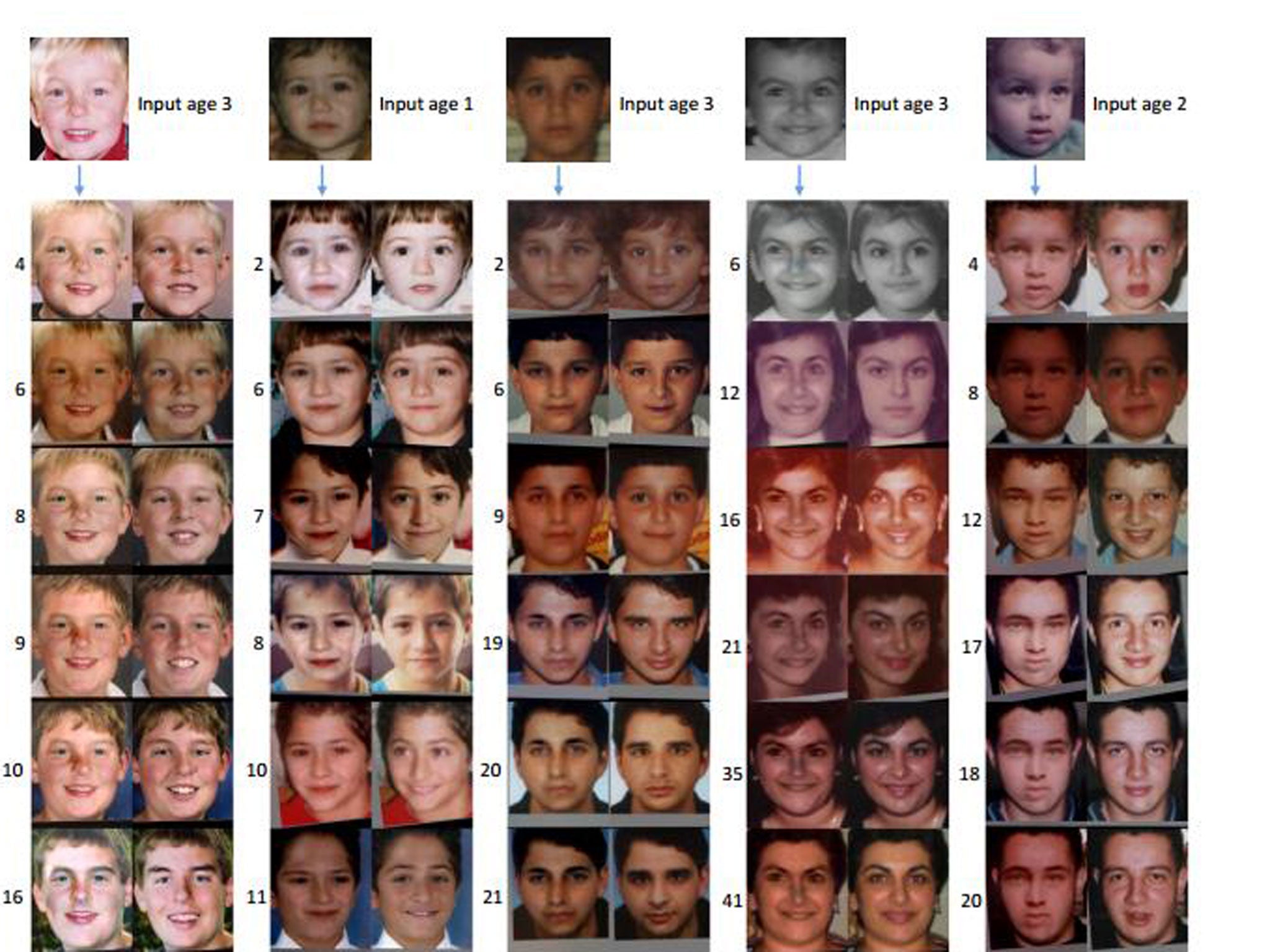New age-progression software predicts what a child will look like as they get older in 30 seconds
Researchers at the University of Washington claim software can automatically generate images of how a child will age throughout each decade

Researchers have developed a tool they say can show what a child will look like as it grows up and ages throughout its life, by analysing thousands of photos on the internet.
A team at the University of Washington have created automatic software that can process visible ageing even in photos showing different expressions, poses, and under different lighting.
The automatic age-progression software can run on a standard computer and takes about 30 seconds to generate results for one face. It works by comparing aging data taken from thousands of pictures on the internet with the photo of a three-year-old, to work out how the child might look as it gets older.
Predicting what a child will look like later in life has always proved difficult because the shape and appearance of an baby's face often changes drastically as it grows up.
But the team say this particular technique is more successful and works by calculating the visual changes between groups of different ages and gender as they age, and then applying those changes t a new face.
The software also determines the average pixel arrangement from thousands of random pictures taken from the internet of children and adults of different ages and from both sexes.
Finally, an algorithm looks at correspondences between the averages from each bracket and calculates the changes in facial shape and appearance during ageing.
These changes are then applied to a new child’s photo to predict what she or he will look like for any subsequent age up to the age of 80.
The researchers tested their images against those of 82 actual people who had been photographed over a span of years.
Random users who were asked to identify the correct aged photo for each example picked the software-generated photos about as often as the real-life ones.
The public will soon have the opportunity to test out the technology using a webcam, according to geekwire.
"Our extensive user studies demonstrated age progression results that are so convincing that people can't distinguish them from reality," co-author Steven Seitz, a UW professor of computer science and engineering, said.
"When shown images of an age-progressed child photo and a photo of the same person as an adult, people are unable to reliably identify which one is the real photo."
While this method considered gender and age, the research team now hope to incorporate other identifiers such as ethnicity, and cosmetic factors such as hair whitening and wrinkles to build a robust enough method for representing every human face.
The research was funded by Google and Intel Corp. The new technique has been outlined in a paper, which will be presented at the IEEE Computer Vision and Pattern Recognition conference in Ohio.
Subscribe to Independent Premium to bookmark this article
Want to bookmark your favourite articles and stories to read or reference later? Start your Independent Premium subscription today.

Join our commenting forum
Join thought-provoking conversations, follow other Independent readers and see their replies